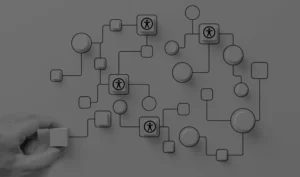Education area is changing quickly due to technology inclusion. With this development, it becomes very important to guarantee that all students can access it. Accessibility in education technology (EdTech) isn’t only about providing tools and resources for disabled students – but also about establishing a learning environment where each student can succeed, no matter their abilities.
The Importance of Accessibility in Education
Education accessibility makes sure that every student, even those who have disabilities, can equally access learning chances. In the digital era we live in now, many parts of education—like web-based lessons to interactive devices—all rely on technology. If these devices are not made with a focus on accessibility, instead of bettering the learning process they might create obstacles for it.
Learners who have disabilities encounter different problems in regular and online learning environments. These difficulties may include visual, hearing or physical restrictions to cognitive issues that influence their engagement with educational material. Accessible EdTech is beneficial in eliminating these hindrances, guaranteeing all students possess the necessary tools for effective learning. When schools plus institutions give priority to accessibility, they make it possible for every student to realize their total potential.
Overview of Accessibility Laws and Standards in Education
In many countries, there are legal requirements mandating accessibility in education. These laws ensure that educational institutions provide equal opportunities for students with disabilities. Some key laws and standards include:
1. The Americans with Disabilities Act (ADA) – In the U.S., the ADA requires that schools and universities make reasonable accommodations for students with disabilities, including ensuring their access to digital content and online learning platforms.
2. Section 508 of the Rehabilitation Act – This U.S. law mandates that federal agencies (including public schools) make their electronic and information technology accessible to people with disabilities.
Also Read: Section 508
3. The Web Content Accessibility Guidelines (WCAG) – These international standards provide guidance on making web content accessible for people with disabilities, including educational platforms and resources.
Know more about Web Content Accessibility Guidelines (WCAG)
4. The Individuals with Disabilities Education Act (IDEA) – In the U.S., IDEA ensures that students with disabilities have access to free and appropriate public education, which includes the use of accessible technology.
Compliance with these laws and standards is essential for schools and EdTech providers, not only to avoid legal repercussions but also to foster an inclusive learning environment.
Benefits of Accessible EdTech for All Students
While accessibility is essential for students with disabilities, it also benefits the entire student body. Accessible EdTech often includes features like captions, text-to-speech, and customizable displays, which can improve learning experiences for all students. Here are a few key benefits:
- Improved Study for Various Requirements – Available instruments assist learners who might have short-term impairments, like a fractured hand, or those with specific learning styles, such as audio-based or visual enthusiasts. Attributes such as flexible text size and voice recognition could be beneficial for all individuals.
- Universal Design for Learning, or UDL, stands as an educational structure that encourages diverse teaching practices to cater different styles of learning. Accessible EdTech merges the principles of UDL by providing numerous ways of participation, illustration and articulation, thus simplifying the understanding process for all students in relation to complex ideas.
- Enhanced Concentration and Participation – Features promoting accessibility like sound reduction, visual assistance, and interactive mechanisms can assist students in maintaining concentration and involvement during classes. This is especially beneficial for learners with ADHD or other attention-linked difficulties.
- Education for the Future – With constant progress in technology, available EdTech makes certain that schools and organizations keep progressing by providing comprehensive answers which can adjust to demands of a varied group of students.
Conclusion
To make EdTech accessible is not only about meeting legal obligations, it’s also about developing a more just and inclusive learning space for all students. When educational bodies and creators of EdTech prioritize accessibility, they help to create a world where every student has the opportunity to succeed irrespective of their abilities.
When we comprehend how crucial accessibility is, keep ourselves updated about the rules and norms, and see the wide-ranging benefits of technology that everyone can use, it becomes possible for us to make education a space where all individuals have chances to be successful.
Read more:
Creating Accessible E-commerce Content
Integrating Accessibility into E-commerce Development Workflows
E-commerce Accessibility for International Markets



